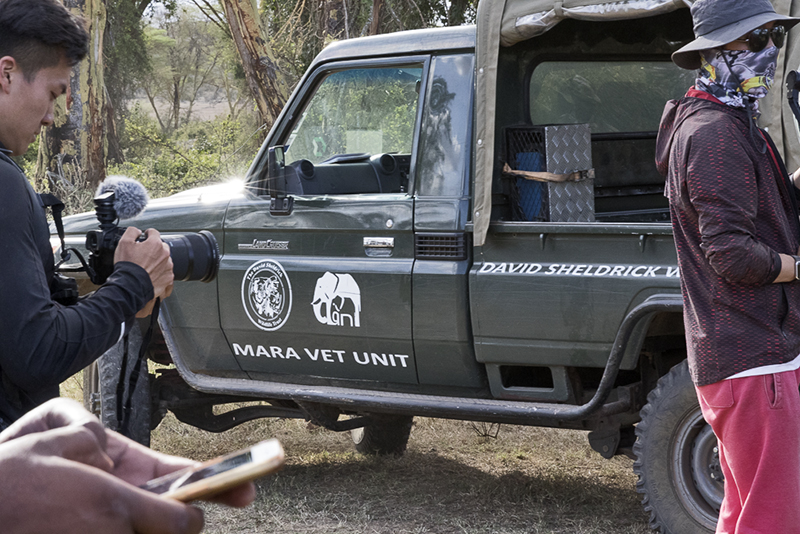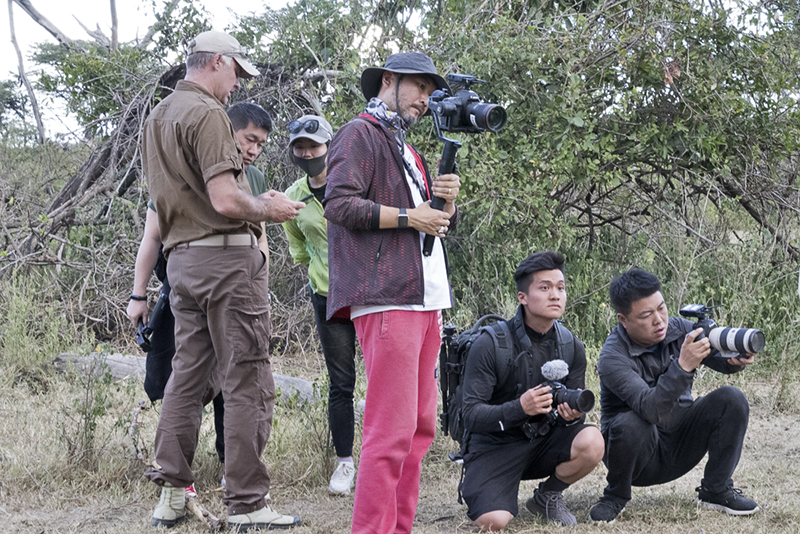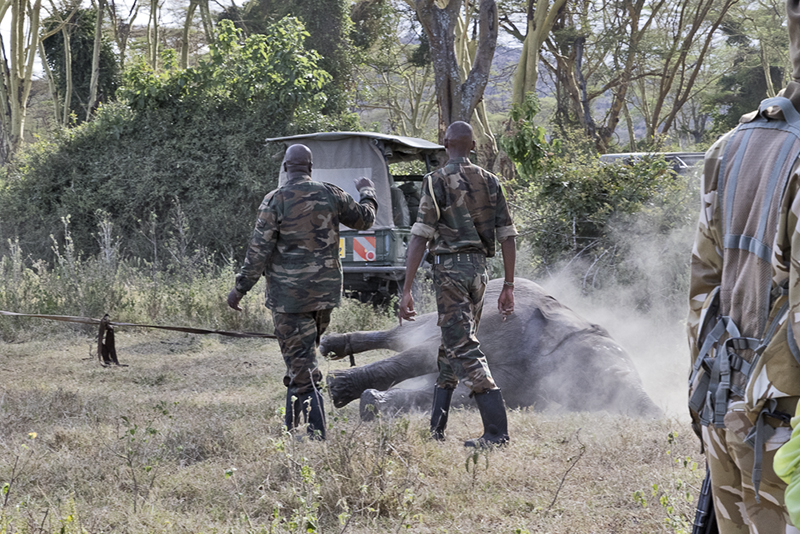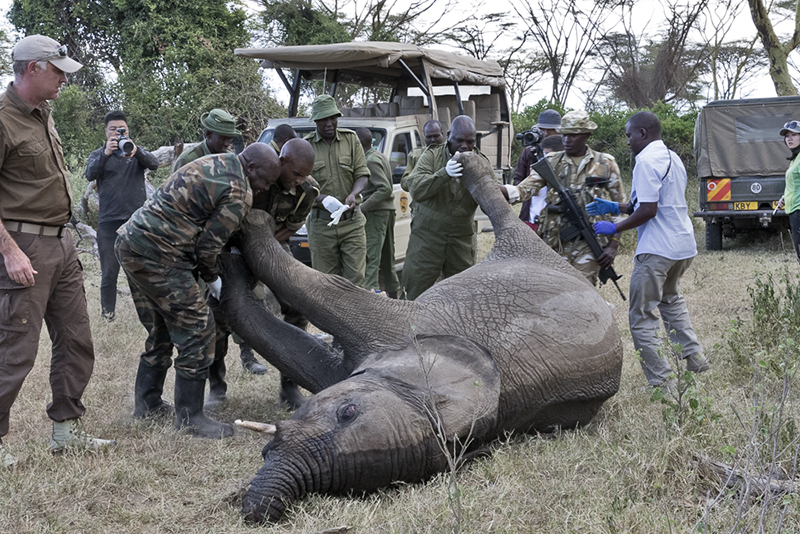My husband and I were in the Masai Mara checking out the Porini Camps and Ol Kinyei Conservancy, the last conservancy for us to explore in the Mara Ecosystem.
On one of our game drives in the morning as we were coming back from a bit of a quiet morning, close to camp we heard the Vervet monkeys making a lot of “kelele” (noise). The amount of noise they were making intrigued us, so we ventured into the Yellow Fever forest along the river. It came as a huge surprise to us to find a dead elephant in the low river. A Monitor lizard that was on the elephant corpse was equally as shocked to see us and scampered into the river bank.
We’ve never experienced anything like this and I was intrigued to learn the process around what the authorities need to do in this case. Our guide and spotter called the conservancy rangers to report the elephant death. Enquiring about what happens next they said the conservancy rangers would have to inform the Kenya Wildlife Service and the Mara Elephant Project and they will have to come and investigate the situation and determine the cause of death.

After lunch as we started our afternoon game drive I requested our guide if we can go back to see what was happening. As we got there, we found the Conservancy rangers on site and Kenya Wildlife Service armed rangers were arriving. A few moments later Marc Goss from the Mara Elephant Project, had arrived at the scene with a few Chinese filmmakers who were generating content for Chinese TV on anti-poaching and elephant conservation (I hope they got some good footage of this unfortunate event to educate the Chinese public on the effects of elephant poaching).




I admire the work that conservationists do. The amount of dedication, research, time, blood, sweat and tears that they put into their work to protect a species other than us greedy Homo Sapiens.
A couple of conservationists that I have had the pleasure of meeting are Mr. Marc Goss (Mara Elephant Project) and Raabia Hawa (Ulinzi Africa Foundation & Walk With Rangers) could use your help. The biggest challenge that conservation organisations have is funding. They are constantly looking to raise funds through sponsorships to continue the awesome work they are doing. I would urge each one of you to help by donating to either or better yet both of these causes.
About the Mara Elephant Project
The Mara Elephant Project (MEP) was set-up to protect elephants in the greater Mara Ecosystem. Due to an increasing human population, wildlife habitats have been decreasing, this results in increased human wildlife conflicts. MEP helps to manage human-elephant conflict by collaring and monitoring the movements of the elephants, by deploying ranger units to patrol the ecosystem. MEP works with the local communities, landowners, the government and other partners using innovative techniques and technology to eliminate the illegal killing of elephants.
